#Code4CA
Text
Week 22: We’re talking with users again!
Week 22 | Monday November 18 – Friday November 22
It’s pretty surreal to think that we’re rounding out week 22 of 40 embedded with our partners. That’s 55%, whew!
We made serious headway this week:
Talked with 6 travellers and travel arrangers. Mostly focused in the NCR, but some in other provinces as well.
IF YOU’RE INTERESTED IN PARTICIPATING, SIGN UP HERE!
If you’re unable to access the GC Intranet at this time, please email me here, or DM me on Twitter here, and we can connect.
Made significant headway on organizing an upcoming pilot with a small test group, where we will be prototyping tools to test whether we can improve their travel experience if they had flexibility in where they booked their travel.
Opened the conversation with our comms team about how we can share our prototypes more widely.
Wrapped up the first version of a fully interactive, functional prototype that helps you put together a travel estimate.
Started getting feedback on the prototype to learn whether it satisfies user needs. (Does it help reduce the time to build an estimate? Does it reduce errors in the estimate?)
Got a local Postgres database set up to consolidate some large Excel files, and allow me to run SQL queries (my data bread and butter) on the historic travel data we have.
Developed a first draft of a current-state service blueprint.

Caption: Mike and Andrea discussing the travel estimate prototype.
Alternative caption: A woman with blonde hair and blue jacket stands holding coffee beside man with red jacket sitting in a chair. They are looking at a laptop computer hooked up to a monitor. They are in an office cubicle.
This week was heavily focused on the building and testing portions of our newly minted team slogan:
Learn &
Build &
Test &
Repeat.
As a product manager, I’m stoked that we’re prototyping, seeking data to define success/failure of the prototypes, and getting feedback from real end users which is leading to… what is shaping up as a product backlog!
Another big turning point this week was changing our working style slightly. We’re shifting back to sprints -- but one week sprints! This will allow us to have really short, tight feedback loops from prototyping to getting feedback on it, and shifting direction based on the feedback very quickly before we invest any more time in a bad idea.
–Maddy, Product Manager
2 notes
·
View notes
Text
Week 21: Back to the office
Week 21 | Monday November 11 – Friday November 15
After a solid couple of weeks of Design Sprinting, CanUX and FWD50 this week is to regroup and a chance to get some heads down time.

This is a short week as we took Monday off to observe Remembrance Day.
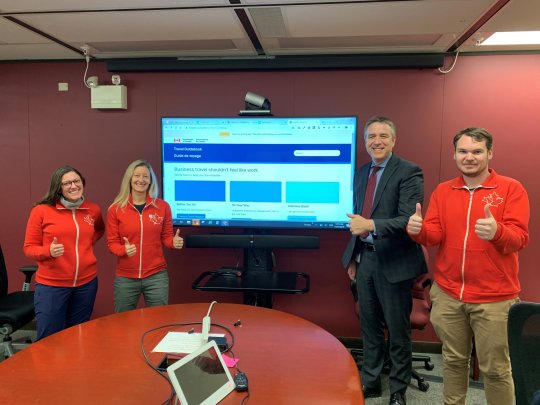
We had the opportunity to visit the Associate Deputy Minister Michael Vandergrift to talk about the future of GC Travel and show him some of our experiments. He also broke in his new @DMA_PSPC twitter account by tweeting about the meeting.

I was heads down coding the Travel Estimator, a prototype idea we've had kicking around for a while now. The estimator helps you plan your budget by pre-populating meals and per-diems, city rate limits and other accommodation allowances. Developing this prototype actually meant updating an API experiment we’d created as well.
Next week, we’re testing with users!

1 note
·
View note
Text
Week 1: June 25 - 28
This was our first week onsite with our government partners, so we spent much of the week settling in. A few highlights:
Tuesday:
We’re official! We took a trip across the river to Gatineau (Mike’s first time in Quebec) to get our ID badges.

Wednesday:
We attended a Design Research Show and Share session hosted by Canadian Digital Service/Service numérique canadien . It was a great opportunity to learn a bit about some of the really cool initiatives going on across the federal government, and start to get an appreciation for some of the subtleties associated with researching on behalf of the government.
The Show and Share was hosted the same day that Colin MacArthur, Head of Research at Canadian Digital Service, and John Millions, Head of Policy at CDS, posted a blog post clarifying some of the differences between User Research and Public Opinion Research. Good stuff that researchers in the private sector don’t really have to consider!

Thursday:
Late Thursday afternoon, our Code for Canada team (Mike, Maddy and I) finally attacked the whiteboard by our space, and started diagramming and documenting assumptions and questions. After a few days of information-intake, it felt good to try to make sense of it. (Spoiler: we haven’t quite solved it all yet ;-)
Friday:
We walked through the existing travel and expense system - until now, we’ve been focusing on the problem space: what users are trying to get done. Today was our first peek at how they are getting it done now. Our partners had been pretty careful up til now not to anchor us in the existing solution, but it was helpful to empathize a little with the people we’re designing for :-)
We also set up our tumblogs so we can be sure to capture our work as we’re going!
3 notes
·
View notes
Quote
Great stories have relatable characters - real humans, real challenges.
Luke Simcoe on storytelling, Communications Lead for Code For Canada
[FK]
0 notes
Link
ICYMI: our first official blog post up on the #code4ca blog!
1 note
·
View note
Photo
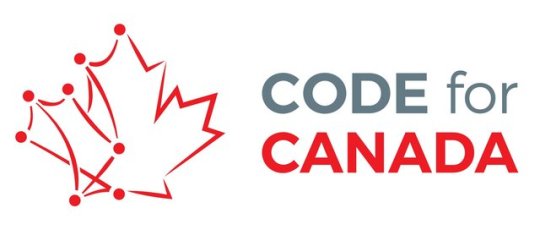
RT @code4ca: For #Canada150, why not code the next chapter of Canadian history? Apply to be a Code for Canada fellow today!… https://t.co/F7w88k954b 2PLAN22 http://twitter.com/2PLAN22/status/869923851030990848
For #Canada150, why not code the next chapter of Canadian history? Apply to be a Code for Canada fellow today! https://t.co/BZaubcavgR http://pic.twitter.com/DSDXRwd45v
— Code for Canada 🇨🇦 (@code4ca) May 31, 2017
0 notes
Photo

We work in the open
How
Tumblr blog (here!)
Twitter: @le0nL @danprime @eneraluca
Through friends: @code4ca** @CDS_GC
Working regularly from public spaces: Friday's we're at Impact Hub
Why
Because we value transparency, collaboration and sharing
To document our process: discoveries, wins, failures and lessons learned
To prove that government doesn’t have to be a black box
To start conversations and make new friends
To show what is possible and how to get there
0 notes
Text
Airline reservations: a deep dive
The commercial passenger airline industry is huge. In 2018, the system-wide, commercial passenger airline revenue was $561B USD [6]. Since air travel is a large part of travel, including and especially that of business travel, I tried to make sense of how an airline ticket gets from the airline to the consumer. Knowing where the airline sales and management industry is going can help anticipate where business travel might be headed in the next 5-10 years.
To the typical vacation traveller, it may seem simple: log onto Google, search for flights, pick one, enter credit card number, hit book, and voila!
Under the hood, it gets complicated...
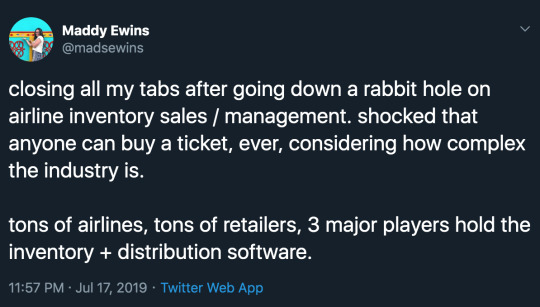
[Add your voice to the conversation here]
So, how does it work?

[A sea of acronyms]
Without getting lost in a sea of acronyms, I’ll try to summarize how airline reservations work as simply as possible:
Airlines have inventory – flights and seats
This inventory is stored in an Airline Reservation System (ARS)
Global Distribution Systems (GDS) are these old and established, massive software companies that provide a link between the inventory and someone requesting inventory; for example, a travel agent. Instead of the travel agent having to contact every airline individually, they could go to one of these distributors and get inventory for many airlines at once.
Front-line agencies liaise with customers to sell inventory – brick & mortar travel agencies, online travel agencies (OTA), or travel management companies (TMC)
Online aggregators (like Google Flights or Kayak) pull data from a number of sources, including GDSs, and other sources that have inventory
Customers can also buy direct from airlines, and travel agencies can go direct to airlines
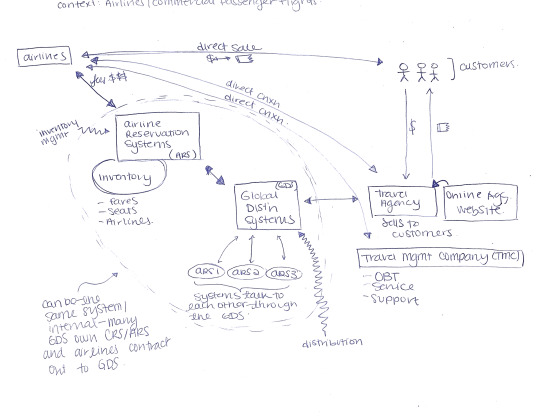
[A very rough system diagram]
Three major players control distribution
Although at one time (ahem, the ‘70s), it made sense to aggregate the inventory of many airlines for easy access, does this make sense anymore? In 2017, three software companies owned 100% of the world’s global market share* for distribution of airline ticket/seat inventory: Amadeus, Sabre, and Travelport [2].
These large, middlemen companies may have centralized things at one time, when travel agents had to pick up the phone to find inventory. Today, travel agents (physical and online) represent only 31% of airline ticket sales (2016) [5].
Open source software and APIs are at the forefront of the digital age. The underlying hardware is more powerful, meaning we can fire off thousands of requests per second for cheap. Google Flights or Kayak (both are aggregators) can scrape the web in a matter of seconds for the cheapest and best flights.
Yet we’re still beholden to three major GDS companies. Shifting off of large, complex, and established systems takes time, but this space seems ripe for innovation.
*Note: With the exception of four countries that have local GDSs – Russia, China, Korea and Japan.
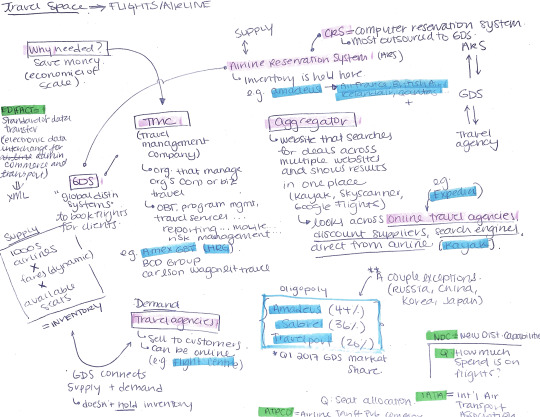
[Rough research notes]
Airlines are pushing for direct sales, and trying to circumvent sky high fees
Since most airline reservation systems are owned and operated by global distribution system companies [3], airlines pay hefty fees to store and manage their inventory. The net profit margin for the average commercial airline was only 3.7% in 2018, and this number is trending downwards [5]. The International Air Transport Association (IATA) predicts direct sales of airline tickets will rise from 33% (2016) to 45% (2021) [5] with airlines trying to reduce fees paid to GDSs.
What does this matter for us?
At this point, I’m not sure how much this matters to our project – it may be more interesting than useful. The space is large and complex, and probably warrants its own fellowship! New standards are being introduced, like the New Distribution Capability (NDC) – which is incentivizing a shift from the old technology, EDIFACT, to the new standard, XML [7].
But we do know there are trends towards direct sales by airlines, mobile-first platforms, and consumers moving to search engines to find flights [5]. This shift in consumer behaviour may influence upstream changes in the GDS space – driving democratization of distribution channels, and driving rapid changes in technology (Blockchain? Open APIs?).
And don’t forget! Travel is much more than just airlines. Trains, busses, hotels, car rentals, food, taxis, local transportation… some (or all) may route through other computer reservation systems. But I digress, and leave that for another day.
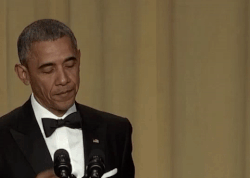
What now?
Further reading – here’s an in depth article that does a much deeper dive into the background of global distribution systems, how they came about, and how their role in the travel industry may change.
Join the conversation – did I get something wrong? See an interesting trend I didn’t pick up on? Drop me a line, or respond to this Twitter thread!
---
Sources
The information in this blog was pulled from a number of sources:
[1] “What is a Travel Management Company?”, Egencia, https://www.youtube.com/watch?v=fK0Fimlcz5E. Accessed July 17th, 2019.
[2] “What is a Global Distribution System?”, Egencia, https://www.youtube.com/watch?v=aGXffNJF_zk. Accessed July 17th, 2019.
[3] “The ineluctable middlemen,” The Economist, Aug 25th 2012, https://www.economist.com/business/2012/08/25/the-ineluctable-middlemen. Accessed August 7th, 2019.
[4] “The Difference Between CRS and GDS in the Travel Industry,” Michael Strauss, Travel Industry Blog, June 26th, 2018, https://www.travel-industry-blog.com/gds/the-difference-between-crs-and-gds-in-the-travel-industry/. Accessed July 17th, 2019.
[5] “The Future of Airline Distribution, 2016-2021,” Henry H. Harteveldt, Atmosphere Research Group, 2016, https://www.iata.org/whatwedo/airline-distribution/ndc/Documents/ndc-future-airline-distribution-report.pdf. Accessed July 17th, 2019.
[6] “Industry Statistics Fact Sheet, June 2019,” IATA, https://www.iata.org/pressroom/facts_figures/fact_sheets/Documents/fact-sheet-industry-facts.pdf. Accessed July 17th, 2019.
[7] “Channel Shock: The Future of Travel Distribution,” Andrew Sheivachman, August 7th, 2017, https://skift.com/2017/08/07/channel-shock-the-future-of-travel-distribution/. Accessed August 7th, 2019.
#Travel#TravelIndustry#CivicTech#CodeForCanada#CodeForCA#Code4CA#GCDigital#Airlines#GDS#ComplexSystem
2 notes
·
View notes
Text
Week 10: Connecting outside, optimizing (research) within
Week 10 | August 26–30, 2019 | Team: Maddy (Product Manager / fellow), Andrea (UX Designer / fellow), Mike (Software Developer / fellow), Robyn (Sr. Product Manager / NextGen Travel), Daniela (UX Researcher / NextGen Travel)
Big themes this week were connecting with others outside of our core team through office hours and bringing our wider team into our process; and optimizing our research process by doubling down on research ops and preparing for our next round of research.
Monday
Monday was prep for office hours, and ensuring we had everything lined up – content, handouts, enough stickies and sharpies, agenda, attendees list, timbits, etc.
Mike was head’s down on building our first Rules as Code prototype.

This is how I picture Mike coding
I also stood up a wiki page (internal to PSPC within the government) with resources and our results.
Tuesday
We hosted our first office hours! I wrote about it here. It was great to share our diverse experiences using user research and testing methods with colleagues from all different backgrounds – comms, healthcare and regulation, human-computer interaction, engineering, music, etc. I learned about behavioural testing in tobacco branding, and dairy studies in drug testing.
Wednesday
Remote work day for most of the team. We’re getting into the grove of “work from home Wednesday’s” that we suggested at our last sprint retro.
Mike set up our Github team, to host open-source code and prototypes.
Andrea and Daniela moved our research plans along, preparing interview guides and outlining our research processes (Who do we talk to? How do we get in touch with them? Do we interview in person or over the phone? etc.)
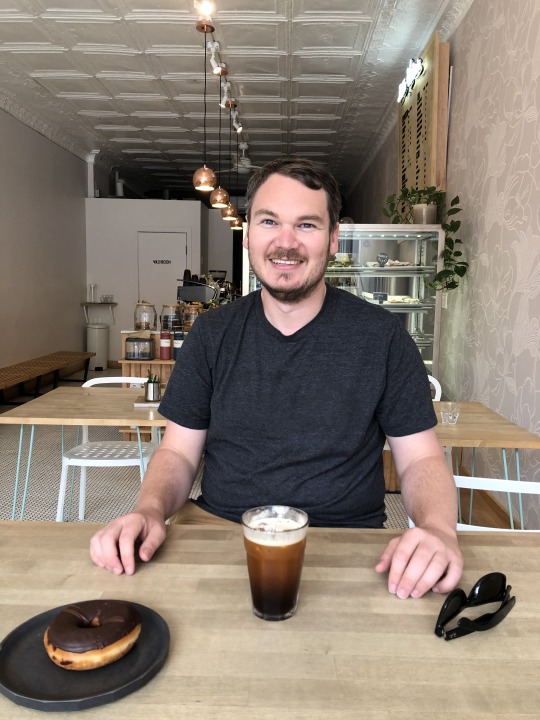
Mike and I had our 1:1 at our local coffee shop in Ottawa
I also toured the GCworkplace Innovation Lab, where we may host future office hours, workshops, or events.

The beautiful, contemporary GCworkplace Innovation Lab in Gatineau
Thursday
Mike continued to move our user experience research intake mechanism forward, which will help us optimize the process of capturing interest from prospective user research participants. We’re taking a page out of Cohort 2′s PSC team to build an online form that we can easily share with people.
Friday
Andrea was off (on the first day of her well-deserved vacation), so the rest of us held down the fort.
We had our first “distributed” retro since I was working from Montreal. The team video called me in, and I used MURAL to share my virtual stickies.

The team in Ottawa called me in from Montreal – here they’re affinity mapping our retro reflections
Mike also shared his progress with the Rules as Code prototype. He took the section of the NJC (National Joint Council) Travel Directive on car insurance and codified it. The user interface accepts a number of binary values.
For example:
Is it your own vehicle? Yes / No
Are you travelling within Canada? Yes / No
Then it calculates whether you’re within or out of policy. SO COOL!

Mike sharing the code of the Rules as Code prototype
–Maddy, Product Management Fellow
#WorkingInTheOpen#Weeknotes#CodeForCanada#Code4CA#CodeForCA#ProductManager#GCDigital#GCWorkplace#RulesAsCode
1 note
·
View note
Text
R is for Retros and Reflection
Sprint 3 | August 6 – 16
At the end of each sprint, our core team conducts a sprint retrospective where we reflect on the sprint and ask ourselves:
What went well?
What didn’t go so well?
What can we improve?
1. This sprint, we felt really good about doing things
Mike blogged, Maddy planned office hours, we actually put ideas to "paper", we made things, we prototyped and conducted user research
Action Items:
Continue to identify blogging opportunities as we work
Continue discipline-specific focus

2. We have some improvements to make in research ops + user testing
There was no movement on UXR onboarding form
The lines between the research team and the research we're doing are fuzzy
Planning and scheduling was last minute and rushed, need better screening and recruiting for interviews
Synthesis was a lot of transcribing, note-taking was a lot of work
We lost context with hand-written notes, and should try and find a way to get everyone listening to research
Action Items:
Mike is exploring audio recording
Andrea ran a research retro which helped identify some concrete things we can improve, and had a follow-up meeting with our research team about research ops and is suggesting tactical process improvements here
Mike committed to push UXR onboarding mechanism forward for Sprint 4

3. We encountered external blockers
Outside our core team; lots of folks are on vacation
Daniela was sick for a week

4. We had a good balance of ownership, collaboration, and time – and want to continue striking this balance
Mike had time to explore Rules as Code, Daniela felt ownership over her project’s direction, Andrea felt like we worked "together" during user interviews, Maddy had more focus time and felt more clarity over our direction
But we should take a step back and do more generative research (not only prototype evaluation)
Action Items:
To continue finding this balance, continue setting clear ownership over tasks by breaking tasks down into bite-size pieces
Meetings for decisions and sharing -- not doing work

5. We had more flexibility in where we worked!
Working from home day + GC coworking
Action Items:
Let's try "no meeting Wednesdays" or "work from home Wednesdays" by default, and if things come up we'll be flexible and accommodate meetings, etc.
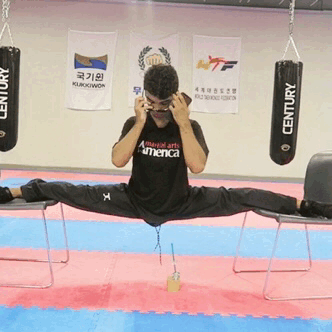
6. We had some good and some bad in how we worked
The good -- less doubting ourselves mid-sprint, good daily collaboration sessions for Maddy/Daniela, sprint planning got more specific
The bad -- we didn't really use the Trello board, still feel like we're not communicating at the beginning with our partners/stakeholders, and lots of meetings still, Maddy felt less visibility into activities of the wider team
Action Items:
Try incorporating Trello in standup to give your daily report
Let's do a Monday team-wide weekly standup (1 min/team update)
Give updates to external stakeholders regularly
For meetings -- continue to ask ourselves if we have a role in meetings, and if it's not clear, ask the meeting organizer what they expect of you (DARCI)

Anything here resonate with you? Any suggestions for how we can improve? Drop us a comment below, or connect on Twitter!
Happy Friday!
– Maddy, Product Manager Fellow
1 note
·
View note
Text
Office Hours #1
We hosted our first office hours!
We had three goals:
To show some of our recent work [designing a prototype + testing the prototype], and get feedback.
To meet public servants championing similar innovation projects, and to spark conversations across teams and departments.
To share our experience with user research, and learn from the experience of others (something we’re deep in the weeds with right now).

(above) Office hours attendees discussing user research methods. At the downtown Ottawa GC coworking space.
Andrea facilitated a session to debunk some of the misconceptions about user research terminology. Sometimes, we throw around “user research” and “user testing” – but do those umbrella terms mean the same to each of us? How do our experiences using different methods differ?
We broke out into pairs or trios, and picked 2–3 different user research/testing methods to discuss; our experience with them, and if we didn’t have personal experience, what questions we had about them. Then, we came together as a group to share back.

(above) Andrea, UX Design Fellow, facilitating an activity about user research methods.
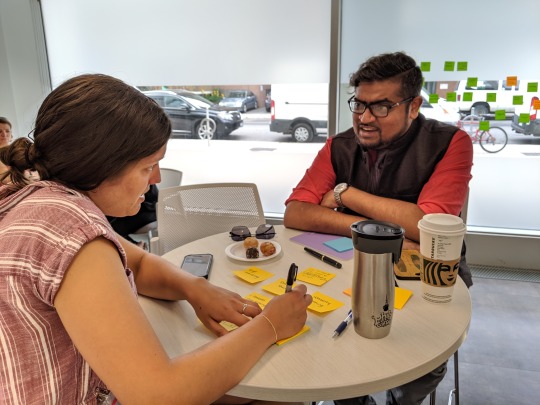
(above) Myself and Ali, #NextGenTravel team member and #GCAgent, discussing user research and testing methods we’ve had experience with in the past: eye tracking, diary studies, and usability testing.
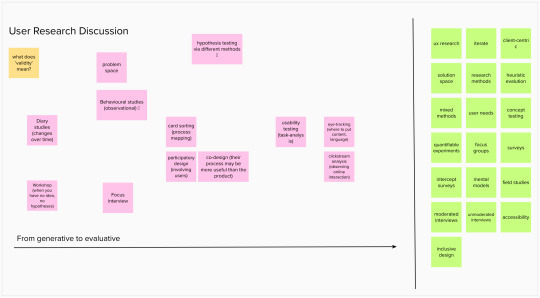
(above) Notes from our activity.
As a group, we had experience with, or questions about, the following (from more generative to more evaluative methods):
Diary studies – useful to observe change over time
Workshops – used when you have no idea or hypotheses, what do you focus on?
Behavioural studies
Focus interviews
Hypothesis testing via different methods
Card sorting – helpful to map a process
Participatory design – involve users throughout the process
Co-design – focus on bringing users into the process instead of bringing the product to them
Usability testing – can users accomplish the task you want them to, where do they struggle?
Eye-tracking – useful to inform design decisions about where to order content, language, information hierarchy
Clickstream analysis – used to observe online interactions
This list isn’t near exhaustive, but was a great start to spark conversation – diary studies for drug testing, behavioural studies to test tobacco packaging, using co-design to bring users into the process and build a better, stronger product or service, etc.
Thanks to everyone that attended! We look forward to hosting a second office hours soon, sharing more work, and engaging in more discussions. Stay tuned on our blog for more until then.
– Maddy, Product Manager Fellow
For more exhaustive resources, start here:
Nielsen Norman Group – free resources on Research Methods
#WorkingInTheOpen#CodeForCanada#CodeForCA#Code4CA#GCDigital#NextGenTravel#UserResearch#UserTesting#UX
1 note
·
View note
Photo
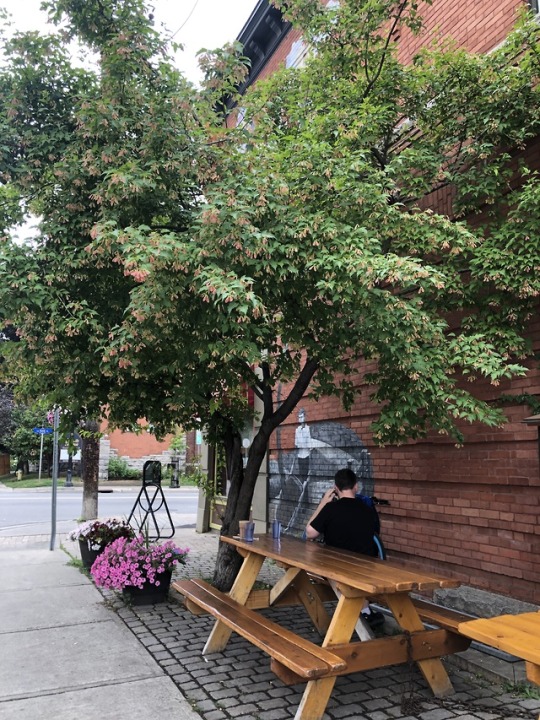
A quick break, a breath of fresh air, and a scrumptious smoothie from Wild Oat Bakery, Ottawa. #WorkFromHomeWednesday.
1 note
·
View note
Text
Week 11: Standing up and building things
Week 11 | September 2–6, 2019 | Team: Maddy (Product Manager / fellow), Andrea (UX Designer / fellow), Mike (Software Developer / fellow), Robyn (Sr. Product Manager / NextGen Travel), Daniela (UX Researcher / NextGen Travel)
A short week thanks to our Labour Day Holiday, this week Tuesday kicked off our sprint, where in addition to our daily product team standup we had our very first team-wide weekly standup. Recently we've been gaining clarity on pilots and what they mean for our team, so much of this sprint is about aligning and planning these initiatives.
Monday
From https://www.statutoryholidays.com - "This holiday officially celebrates workers and the labour union movement, however, most of us only think of it as the last long weekend of the summer, a perfect occasion for one last BBQ or canoe trip.
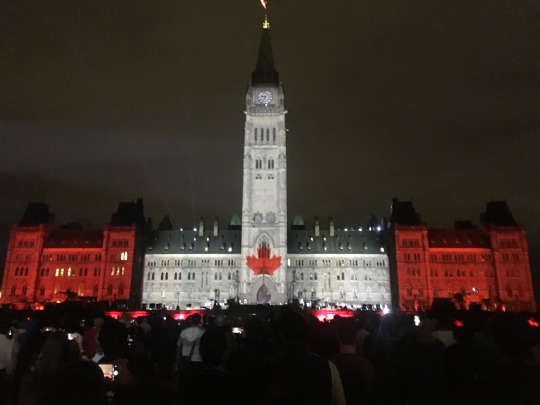
So how did you spend your labour day? I saw the wonderful light show at Parliament!
Tuesday

The wider NextGen Travel team includes communications, research, program management and product people.

We had our first team-wide standup! NextGen Travel team is 10-15 people between communications, research, program management and product management. We all gave a high level overview of what we've been working on for the past week, what we plan to work on this week and surface any blockers. This creates visibility across the whole team and helps align the team and identify blockers.
Wednesday
I started my Wednesday by blowing up 12 balloons.

Happy birthday Maddy! Any excuse to eat some (vegan) Suzy Q donuts and celebrate with the team!
Today the NextGen GitHub gained some new repo's, a prototype of Rules as Code as well as the draft of our User Research Recruitment Form.
Thursday
Maddy hosted a Lunch + Learn on using Slack, which has recently been rolled out to our whole team. It was an opportunity to show how Slack can be used to communicate quickly on a distributed team.
Friday
Maddy and I set aside today to do a quick mini-sprint, where we gave ourselves some latitude to just build something.
We first brainstormed what we thought the worst travel system could be by coming up with ideas that would be super frustrating to a user. Then, by grouping these ideas we were able to come up with a list of frustrations to inform designing a prototype.
Enter data multiple times
Manual Paper-based Systems
Control over personal preferences, such as food, luggage, activities in personal time
Bad user interface (crashing, poor sorting of data, lack of currency support)
Lack of trust and privacy.
Old tech
Having to plan too far in advance.
Out of date rules
Excessive Training
Out of pocket expenses
Lack of support
Lack of updates
Lack of confidence in booking
Inefficient routes/wasting time
Complex back office processes
Inefficient processes
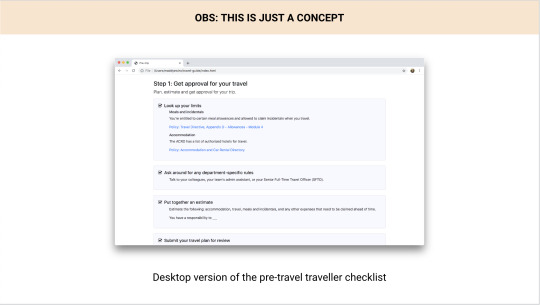
It’s simple. An easy to read checklist to assist the user through the process.
Let’s build more things!
3 notes
·
View notes
Text
REAL TORONTO JOBS
JOB ALERT: Code for Canada @code4ca is hiring Partnership Development Lead. Help governments build digital capacity and deliver modern services to Canadian residents.
You know what to do.
Good luck!#jobs #Canada #code4ca https://t.co/JfhFuibWgZ
— Kaleem (@kaleemux) August 17, 2020
Via The Hidden Toronto Job Market on TWITTER! https://twitter.com/REAL_JOBS_YTO ]#Jobs #Hiring #COVID19
August 20, 2020 at 05:58PM
0 notes
Text
REAL TORONTO JOBS
📣 We're hiring! 📣
As our new Partnership Development Lead, you'll help support the growth of our programs and increase our impact across the country. Applications are open until the position is filled. Apply today! https://t.co/7rNMrSNjFT pic.twitter.com/aJb3VJTtSj
— Code for Canada 🇨🇦 (@code4ca) August 17, 2020
Via The Hidden Toronto Job Market on TWITTER! https://twitter.com/REAL_JOBS_YTO ]#Jobs #Hiring #COVID19
August 17, 2020 at 03:19PM
0 notes
Text
REAL TORONTO JOBS
As our next Education Program Manager, you will:
💫 Deliver stellar learning experiences
🤝 Manage relationships
⌛ Juggle priorities
💸 Balance budgets
Applications are open until the position is filled. Apply today!https://t.co/FJwpORQ1lY
— Code for Canada 🇨🇦 (@code4ca) August 4, 2020
Via The Hidden Toronto Job Market on TWITTER! https://twitter.com/REAL_JOBS_YTO ]#Jobs #Hiring #COVID19
August 10, 2020 at 04:58PM
0 notes